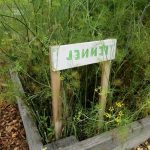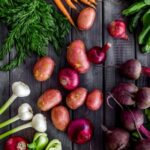Are you interested in starting your own vegetable garden in Western Washington? The lush and temperate climate of this region makes it an ideal location for growing a wide variety of vegetables. Whether you are a seasoned gardener or a beginner, Western Washington offers unique opportunities and challenges for cultivating a successful vegetable garden.
The climate and soil conditions of Western Washington provide an excellent environment for growing vegetables. With mild winters and moderate summers, the region allows for an extended growing season, perfect for a diverse range of crops. In addition, the rich, well-drained soils support healthy plant growth and abundant harvests.
When it comes to vegetable gardening in Western Washington, there are several factors to consider, including choosing the best vegetables to grow, managing pests and diseases, implementing effective watering techniques, and more. This introductory section will provide an overview of what you need to know to start your own thriving vegetable garden in this beautiful region.
So whether you have limited space or ample room for a large garden plot, there are plenty of options available for your personal tastes and desires.
Climate and Soil Conditions in Western Washington
Western Washington has a unique climate and soil conditions that make it suitable for vegetable gardening. The region experiences mild, wet winters and dry summers, with an average annual rainfall of 38 inches. The temperature ranges from 30°F to 80°F, making it ideal for growing a variety of vegetables. The soil in Western Washington is typically acidic and well-draining, which can be amended to create a fertile environment for vegetable plants to thrive.
When it comes to the soil conditions in Western Washington, gardeners may encounter some challenges due to the acidic nature of the soil. However, by incorporating organic matter such as compost or aged manure, gardeners can improve the soil structure and fertility. Additionally, adding lime can help raise the pH level to make the soil more neutral and suitable for growing a wider range of vegetables.
In terms of climate, Western Washington’s moderate temperatures provide an extended growing season for many vegetables. This allows gardeners to plant cool-weather crops such as lettuce, spinach, and kale in early spring or late summer for a fall harvest.
The mild winters also make it possible to grow certain winter-hardy vegetables like Brussels sprouts and carrots throughout the year. Overall, understanding the unique climate and soil conditions of Western Washington is essential for successful vegetable gardening in the region.
- Choose vegetable varieties that are well-suited to the specific microclimates within Western Washington
- Monitor soil pH levels and make necessary amendments to create optimal growing conditions
- Utilize raised beds or containers filled with high-quality potting mix for improved drainage and easier control over soil conditions
Best Vegetables to Grow in Western Washington
When it comes to vegetable gardening in Western Washington, choosing the right vegetables to grow is essential for a successful and bountiful harvest. The climate and soil conditions in this region make it ideal for growing a variety of vegetables throughout the year.
One of the best vegetables to grow in Western Washington is kale. This leafy green is known for its hardiness and can withstand the cool, damp climate of the region. In addition, varieties such as Lacinato or Red Russian kale thrive in the fertile soil found in Western Washington.
Another excellent vegetable to consider is broccoli. With the mild winters and cool summers of Western Washington, broccoli has ample opportunity to flourish. The well-drained soil in this region also provides an ideal environment for broccoli plants to develop strong root systems.
Carrots are also a popular choice for vegetable gardeners in Western Washington. The sandy loam soil of the region allows carrots to grow long and straight, while the temperate climate ensures that they mature at a consistent pace.
| Vegetable | Reasons to Grow |
|---|---|
| Kale | Hardy, thrives in cool climate and fertile soil |
| Broccoli | Mild winters and cool summers provide ideal growing conditions |
| Carrots | Sandy loam soil allows for straight growth, temperate climate ensures consistent maturation |
Tips for Starting a Vegetable Garden in Western Washington
When it comes to starting a vegetable garden in Western Washington, there are a few key tips to keep in mind. First and foremost, it is important to consider the climate and soil conditions unique to this region. Western Washington has a maritime climate with mild, wet winters and dry summers, which can greatly impact the success of your vegetable garden. Additionally, the soil in this region tends to be acidic and may require amendments for optimal plant growth.
One of the most important factors in starting a successful vegetable garden in Western Washington is choosing the right location. It is essential to select a spot that receives ample sunlight, as many vegetable plants thrive in full sun. Additionally, it is advisable to choose a location with good drainage to prevent waterlogging, especially during the rainy season.
Another valuable tip for starting a vegetable garden in Western Washington is to carefully plan out your garden layout. Consider the spacing requirements for each type of vegetable you wish to grow, as well as any potential companion planting opportunities. By carefully planning your garden layout, you can maximize space and create an environment where your vegetables can thrive.
Lastly, when starting a vegetable garden in Western Washington, it is important to select the right vegetables for this specific climate and soil conditions. Some vegetables that tend to perform well in this region include kale, lettuce, peas, carrots, and broccoli. It is also advisable to choose varieties that are well-suited for cooler temperatures and shorter growing seasons typically experienced in Western Washington.
By taking these tips into consideration when starting a vegetable garden in Western Washington, you can set yourself up for a successful and bountiful harvest. With careful planning and attention to the unique aspects of gardening in this region, you can enjoy the satisfaction of growing your own fresh produce right at home.
Pest and Disease Control for Vegetable Gardens in Western Washington
One of the challenges of vegetable gardening in Western Washington is dealing with pests and diseases that can wreak havoc on your plants. Luckily, there are several effective strategies for controlling these issues and keeping your garden thriving.
Some common pests that you may encounter in a Western Washington vegetable garden include aphids, slugs, and cabbage worms. These pesky insects can quickly decimate your crops if left unchecked. To combat them, consider implementing natural pest control methods such as introducing beneficial insects like ladybugs or lacewings, using insecticidal soaps, and creating physical barriers like row covers.
In addition to pests, vegetable gardens in Western Washington can also fall victim to various diseases such as powdery mildew and blight. To prevent the spread of these diseases, it’s important to practice good garden hygiene by removing any infected plant material, rotating your crops each season, and providing adequate airflow between plants.
When dealing with pest and disease control in a Western Washington vegetable garden, it’s essential to stay proactive and monitor your plants regularly. By taking preventive measures and intervening at the first sign of trouble, you can help ensure a successful harvest of healthy vegetables.
- Regularly inspect plants for signs of pests or diseases
- Introduce beneficial insects to keep pest populations in check
- Practice good garden hygiene by removing infected plant material
Remember that prevention is key when it comes to maintaining a healthy vegetable garden in Western Washington. With the right strategies and a little diligence, you can effectively control pests and diseases without resorting to harsh chemical treatments.
Watering and Irrigation Techniques for Vegetable Gardens in Western Washington
Understanding the Climate and Its Impact on Watering
Western Washington’s climate, characterized by mild, wet winters and relatively dry summers, poses unique challenges for vegetable gardeners when it comes to watering. The region receives the bulk of its annual rainfall during the winter months, making it essential for gardeners to effectively manage irrigation during the drier summer season. Understanding the specific water needs of different vegetable crops and adjusting irrigation practices accordingly is crucial for successful gardening in this region.
Implementing Water-Saving Techniques
Given the importance of water conservation in Western Washington, vegetable gardeners are encouraged to implement water-saving techniques in their gardens. One effective method is mulching, which helps retain soil moisture by reducing evaporation. Additionally, utilizing drip irrigation systems can provide targeted watering directly to plant roots while minimizing water waste. Rainwater harvesting through the use of barrels or cisterns is also a sustainable practice that can supplement irrigation needs during dry periods.
Monitoring Soil Moisture and Proper Timing
Regularly monitoring soil moisture levels is vital for ensuring that vegetable plants receive adequate hydration while avoiding waterlogged conditions. Gardeners can employ simple methods such as finger testing or utilizing moisture meters to assess when to irrigate.
It’s essential to time watering sessions carefully, preferably during the early morning or late afternoon to minimize water loss through evaporation. By being mindful of soil moisture and employing proper timing, vegetable gardeners can optimize irrigation practices for their crops’ health and productivity in Western Washington.
Overall, managing watering and irrigation techniques in a Western Washington vegetable garden requires attentiveness to the region’s climate patterns and a commitment to sustainable water usage. By implementing water-saving methods and closely monitoring soil moisture levels, gardeners can nurture thriving vegetable crops despite the unique climatic conditions of this beautiful region.
Harvesting and Preserving Vegetables in Western Washington
When it comes to harvesting vegetables in Western Washington, timing is everything. The region’s cool and wet climate can affect the growth and maturity of different vegetables, so it’s important to pay attention to each plant’s specific harvesting requirements.
For example, leafy greens like lettuce and spinach should be harvested when they are young and tender, before they bolt in the warmer weather. Root vegetables such as carrots and beets can be left in the ground longer, but should still be harvested before the first frost.
Preserving Methods for Vegetables in Western Washington
Once you’ve harvested your vegetables, preserving them allows you to enjoy your homegrown produce throughout the year. In Western Washington, where the growing season is relatively short, preserving methods such as canning, pickling, freezing, and dehydrating can help extend the shelf life of your harvest. Canning is a popular method for preserving tomatoes, cucumbers for pickles, and fruits like berries. Freezing works well for beans, peas, corn, and other vegetables that tend to lose their texture when canned.
Proper storage of harvested vegetables is crucial for maintaining their freshness and flavor. In Western Washington’s damp climate, root cellars or cool basements are ideal for storing root vegetables like potatoes and onions. Leafy greens should be stored in the refrigerator with a damp cloth to maintain their crispness. It’s also important to regularly check on stored vegetables to remove any spoiled ones that could cause others to spoil as well.
Vegetable gardening in Western Washington provides ample opportunities for growing a wide variety of crops despite its unique climate conditions. With careful attention to proper harvesting techniques and preservation methods, gardeners can enjoy the bounty of their harvests throughout the year. Whether through canning or freezing, embracing these traditional methods will allow gardeners to savor the taste of their hard work long after the growing season has come to an end.
Community Resources and Support for Western Washington Vegetable Gardeners
When it comes to vegetable gardening in Western Washington, community resources and support play a crucial role in the success of gardeners. Fortunately, there are numerous resources available to support both novice and experienced gardeners in this region.
One valuable resource for Western Washington vegetable gardeners is the network of community gardens spread throughout the area. These communal spaces provide opportunities for individuals to learn from one another, share knowledge and experiences, and access shared tools and resources. Additionally, many community gardens offer workshops, classes, and events focused on sustainable gardening practices specifically tailored to the unique climate and soil conditions of Western Washington.
In addition to community gardens, there are also several local organizations dedicated to supporting vegetable gardeners in Western Washington. These organizations often provide educational resources, host gardening demonstrations, and connect gardeners with local experts who can offer guidance on best practices for successful vegetable cultivation in the region. By tapping into these resources, gardeners can expand their knowledge and connect with like-minded individuals who share a passion for sustainable gardening in Western Washington.
Furthermore, online forums and social media groups have become popular platforms for Western Washington vegetable gardeners to connect with one another. These digital communities serve as valuable sources of information, allowing participants to seek advice from experienced gardeners, troubleshoot common issues related to vegetable cultivation in the region, and share their own successes with a wider audience.
The ability to connect virtually has transformed how gardeners can access support and has made it easier for individuals from diverse backgrounds to participate in the rich tradition of vegetable gardening in Western Washington.
Conclusion
In conclusion, vegetable gardening in Western Washington offers a unique and rewarding experience for both seasoned gardeners and beginners alike. Despite the challenges posed by the region’s climate and soil conditions, the abundance of community resources and support make it an achievable and enjoyable endeavor. By embracing the joys of vegetable gardening in Western Washington, individuals can not only enjoy fresh produce but also connect with their local community and foster a greater appreciation for sustainable living.
Through careful selection of vegetables that thrive in the region’s specific climate and soil conditions, gardeners can yield bountiful harvests. Utilizing the tips for starting a vegetable garden in Western Washington and implementing pest and disease control measures will ensure that your garden flourishes throughout the growing season. Additionally, mastering watering and irrigation techniques is essential to maintaining healthy plant growth.
Furthermore, the act of harvesting and preserving vegetables in Western Washington allows individuals to savor the fruits of their labor long after the growing season has ended. Whether through canning, freezing, or pickling, there are numerous methods available to preserve the freshness of homegrown produce.
Ultimately, by taking advantage of community resources and support for western washington vegetable gardening such as local gardening clubs or workshops, individuals can learn from others’ experiences while sharing their own knowledge among like-minded enthusiasts.
Frequently Asked Questions
What Veggies Grow Best in Western Washington?
In Western Washington, veggies like lettuce, kale, carrots, beets, and spinach thrive due to the mild climate and ample rainfall. Root vegetables such as potatoes and onions also do well in this region.
When Should I Start a Vegetable Garden in Washington State?
It’s best to start a vegetable garden in Washington State in early spring when the soil is workable and the risk of frost has passed. This allows for a longer growing season and optimal conditions for most vegetables to thrive.
How Do You Grow Vegetables in the Pacific Northwest?
To grow vegetables in the Pacific Northwest, it’s important to choose varieties that are well-suited for the region’s cool, moist climate. Proper soil preparation, adequate sunlight exposure, and regular watering are key factors for successful vegetable gardening in this area. Additionally, practicing crop rotation and using organic mulches can help maintain healthy soil and reduce disease pressure.

If you’re looking to get into vegetable gardening, or are just looking for some tips on how to make your current garden better, then you’ve come to the right place! My name is Ethel and I have been gardening for years. In this blog, I’m going to share with you some of my best tips on how to create a successful vegetable garden.





